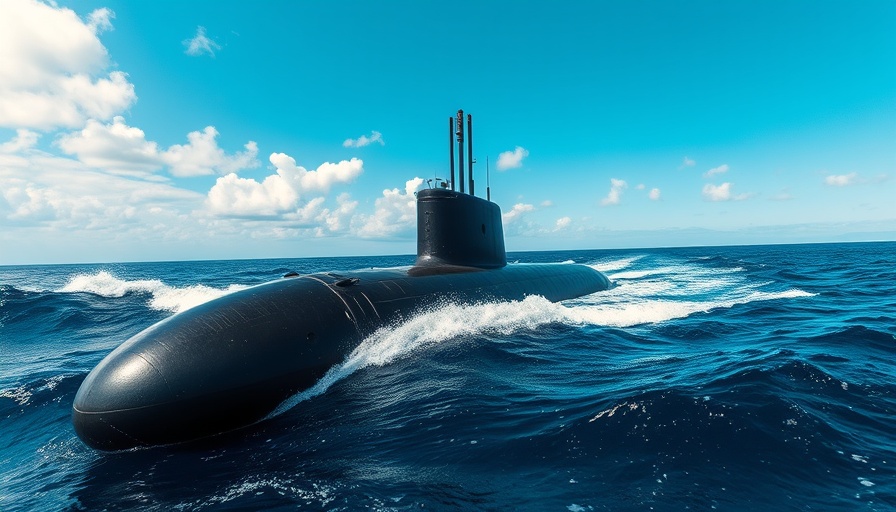
The Rise of Riverine Warfare: A New Chapter in Ukrainian Defense
As Ukraine navigates the ongoing challenges posed by Russia's military presence, the nation is innovating with an impressive new fleet of unmanned surface vessels (USVs) designed specifically for river combat. In July 2025, Ukrainian firm NoviTechNe unveiled the Ursula, a one-meter-long USV that promises to enhance Ukraine's capabilities in riverine warfare, a critical area given Ukraine's extensive river networks.
What Makes the Ursula Stand Out?
The Ursula is not just another drone; it’s a multifunctional system capable of conducting vital reconnaissance missions, deploying as a floating mine, or even launching small drones from water. Its compact design allows for agile navigation in river environments, showcasing why size is pivotal for these specialized vessels. Compared to larger USVs like the Magura, the Ursula’s one-meter form allows it to maneuver adeptly through the narrow and often cluttered waterways of Ukraine, where traditional vessels would falter.
The Strategic Importance of Riverine Warfare
Rivers have historically played a significant role in military strategy, and the Dnipro, flowing through Ukraine for 981 kilometers, is no exception. This waterway their importance is amplified during the ongoing conflict, serving as both a defensive barrier and a strategic conduit for movement. By deploying USVs like the Ursula, Ukrainian forces can monitor and secure these waterways, ensuring a tactical advantage over Russian resupply boats while navigating the natural obstacles that can impede larger vessels.
Challenges Tied to Riverine Operations
While the capabilities of these new naval drones seem promising, riverine combat presents unique challenges. Navigation can be obstructed by natural elements such as sandbanks, dense vegetation, and debris. Changing water levels add another layer of unpredictability, necessitating highly adaptable technology that can respond effectively to these conditions. The compact design of the Ursula and similar USVs meets these demands, providing an operational edge in challenging environments.
Future Predictions: How Riverine Combat Will Evolve
As Ukraine continues to innovate with military technology, the emphasis on riverine capabilities signals a future where unconventional warfare tactics may gain prominence. The development of smaller, agile USVs like the Ursula could redefine naval strategies, encouraging other nations to adopt similar approaches for their unique geographical challenges. The investment in this technology could lead to enhanced surveillance and offensive operations, reshaping the way conflicts are waged in riverine environments.
Conclusion: A New Era of Military Technology
With the advent of specialized unmanned vessels, Ukraine is setting the stage for a transformative approach to river warfare. The introduction of drones like the Ursula reflects a broader trend toward using technology to address specific strategic needs. As these capabilities are refined and deployed, they will likely alter the dynamics of conflict along Ukraine's vital waterways, fostering a renewed focus on innovation in military operations.
 Add Row
Add Row  Add
Add 




Write A Comment